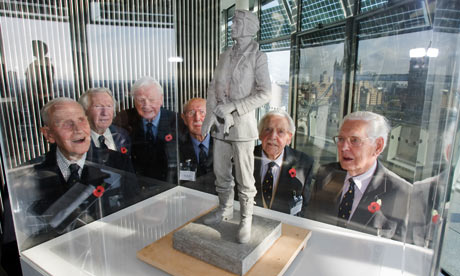
The Contemporary Art World, yesterday
It is possible to read the Court’s opinion … in a variety of ways. In saying this, I imply no criticism of the Court, which in those cases was faced with the task of trying to define what may be indefinable … I shall not today attempt further to define the kinds of material I understand to be embraced within that shorthand description; and perhaps I could never succeed in intelligibly doing so. But I know it when I see it.
— Justice Potter Stewart, Jacobellis vs Ohio, 1964
What does contemporary art look like? What a ridiculous question! It doesn’t look like anything, does it? No one in their right minds would want to begin to map out a common style across the thousands of different approaches littering the white floors and gray walls of contemporary art galleries all over the world. There have been attempts to bracket artists together, notably by Jerry Saltz in a lovely unprintable phrase that’s apparently still in style (judging by this year’s Venice Biennale), but they only ever glance at comprehensiveness. Talent contests like the Turner Prize begin to look like meaningless conflations of the Oscars, the Pulitzer, and the Nobel. Future students of art history on a tight deadline may opt to avoid the obstreperous unwillingness of 21st-century art to slip into easy categories. Yet we still call it contemporary art, and we know it when we see it. Or rather: we think we know it when we don’t.

The Contemporary Art World, this morning
Take, for example, the latest occupant of the empty plinth in Trafalgar Square. On October 14, the 2,400th and final participant in Antony Gormley’s wildly popular One and Other project left the plinth, to be replaced by a large, figure-like shape wrapped in blue plastic in homage to the late Jeanne-Claude. Unwrapped, the sculpture underneath was revealed to be a 6-meter tall figurative sculpture of Battle of Britain hero Sir Keith Park in tawny, bronze-effect fiberglass. Dressed in Royal Flying Corps goggles and lifejacket, the figure looks up to the sky and waggles on a glove in readiness. The sculpture, by Leslie Johnson, is a result of vituperative campaigning from the Sir Keith Park Memorial Campaign, and has drawn perhaps predictable criticism from both sides of the self-imposed “divide”: the Guardian’s Jonathan Jones described it, with knowing irony, as a “fascist icon,” while Frederick Forsyth and William Packer, writing in The Times, proposed that “the statue will push back boundaries and challenge what has become the received wisdom: that traditional art forms do not command as much respect in the contemporary art world.”
The Keith Park sculpture was made this year, and so it’s contemporary art in the literal sense. But by no stretch of the imagination would the sculpture be shown in any major contemporary art museum, gallery, or art fair, nor would it be considered worthy of critical comment in any major contemporary art publication, except (as I’m studiously trying not to do now) as a somewhat sneeringly cited example of a populist tendency in art placed in contrast with more “serious” conceptual work. On the other hand, the sculpture would be (and implicitly has been) used as an attack on “received wisdom”: a Stuckist-style counterattack to a paranoiacally defined hegemony dedicated to trampling the traditions of skill and observation and the figurative under a greasy heel. Yet both strands of the apparent divide – between the bullish conservatism of the self-styled art world outsiders (the Palins, let’s call them) and the studious indifference of the contemporary art mainstream – appear to miss the point. Two previous and well-regarded occupants of the fourth plinth have been figurative sculptures, so there’s no weight to the argument that the human figure is somehow taboo in the contemporary art lexicon.

The Contemporary Art World, last week
Sculptors such as Juan Munoz, Kiki Smith, Charles Ray, Katharina Fritsch, Bruce Nauman, Maurizio Cattelan, Stephan Balkenhol, and Georg Baselitz sometimes or exclusively work within a figurative mode, too, and there’s no questioning their position in the contemporary pantheon. So what makes, say, Wallinger’s Ecce Homo – his 1999 fourth plinth work, a white marble resin statue of a bald man, crowned in gilded barbed wire, standing in characteristic Christ pose – different or more worthy of contemporary critical discussion than Johnson’s Keith Park? Neither lack political content. Nor classical reference. Nor a recognizable subject. So do we really know what we’re seeing when we see it?
Perhaps there isn’t an easy resolution to the question. There’s no doubt that institutional, critical, and pedagogical focus leans predominantly towards a certain idea of what contemporary art should be. Ultimately, contemporary art is art that anticipates a certain kind of critical position, a certain lexicon of interpretation, in sync with transformations in the way that art is made and shown. But that fails to address what’s most obvious: that, hard as it is to draw the line, there is one.




Pingback: Who Gets to Say It Is Art? – ECC Sculpture Discussion #2 « Art and Teaching Blog